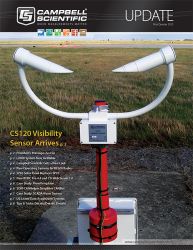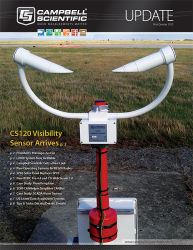
It dates me, but I remember when computers were without a graphical user interface (GUI). I have always had some difficulty reconciling modern man’s development of GUIs with our history, especially as artistically expressed by Rudyard Kipling over 100 years ago in one of his Just So Stories.
“ . . . till they had done and drawn all the picture-sounds that they wanted, and there was the Alphabet, all complete. And after thousands and thousands and thousands of years, and after Hieroglyphics, and Demotics, and Nilotics, and Cryptics, and Cufics, and Runics, and Dorics, and Ionics, and all sorts of other ricks and tricks (because the Woons, and the Neguses, and the Akhoonds, and the Repositories of Tradition would never leave a good thing alone when they saw it), the fine old easy, understandable Alphabet—A, B, C, D, E and the rest of ‘em—got back into its proper shape again for all Best Beloveds to learn when they are old enough.” (from “How the Alphabet Was Made”)
Scientists extol the virtues of graphics as capitalizing on the capacity of the human mind to immediately comprehend meaning from an image that, if left to words, would be incomplete or require more time to fully explain. A combination of text and images offers the most visual communication. To that end, Campbell Scientific, Inc., recently upgraded its web site with an introduction on the home page of six graphics that represent, in broad terms, the markets we serve.
![]() Weather observation with automatic weather stations was one of the first markets served by Campbell Scientific, with dataloggers, sensors, and systems that included digital recording beginning in the 1970s. We continue to offer new products for weather observation, and one of those included in this newsletter is the CS120 Visibility Sensor developed by the Campbell Scientific group company in the UK. The weather symbol also relates to some of our work in biogeochemistry, supporting customers who measure the exchange of gases at the earth’s surface to better understand carbon and nitrogen cycles.
Weather observation with automatic weather stations was one of the first markets served by Campbell Scientific, with dataloggers, sensors, and systems that included digital recording beginning in the 1970s. We continue to offer new products for weather observation, and one of those included in this newsletter is the CS120 Visibility Sensor developed by the Campbell Scientific group company in the UK. The weather symbol also relates to some of our work in biogeochemistry, supporting customers who measure the exchange of gases at the earth’s surface to better understand carbon and nitrogen cycles.
![]() Water is related to weather, usually through precipitation and evaporation, but in its own right has some needs apart to measure level, flow, temperature, turbidity, and a host of other parameters. This basic resource will be stretched even more in years to come, and the key to careful planning, use, and peace between competing interests begins with measurement.
Water is related to weather, usually through precipitation and evaporation, but in its own right has some needs apart to measure level, flow, temperature, turbidity, and a host of other parameters. This basic resource will be stretched even more in years to come, and the key to careful planning, use, and peace between competing interests begins with measurement.
![]() Energy, and in particular renewable energy, is maturing and expanding with developments of wind and solar farms to harvest electrons. While siting relates directly to climate and weather conditions, some of the technical challenges have to do with machines and materials and how they perform or withstand certain conditions of wind, sun, and frozen precipitation.
Energy, and in particular renewable energy, is maturing and expanding with developments of wind and solar farms to harvest electrons. While siting relates directly to climate and weather conditions, some of the technical challenges have to do with machines and materials and how they perform or withstand certain conditions of wind, sun, and frozen precipitation.
![]() Machines are nearly as old as the alphabet, and one of the benefits of modern electronics is using them to test the performance of modern, sophisticated machines. Whether it’s endurance testing, noise from brakes, hot spots from an exhaust, or the pressure pulse from actuating a solenoid, Campbell Scientific dataloggers help make measurements that improve our understanding and the design of machines.
Machines are nearly as old as the alphabet, and one of the benefits of modern electronics is using them to test the performance of modern, sophisticated machines. Whether it’s endurance testing, noise from brakes, hot spots from an exhaust, or the pressure pulse from actuating a solenoid, Campbell Scientific dataloggers help make measurements that improve our understanding and the design of machines.
![]() Structures can bridge obstacles and space to support machines and surfaces, divert water, and perform other functions. With longer and more complex structures built where they must withstand ice, floods, wind, corrosion, and the dynamics of earthquakes or extraordinary loads, monitoring is needed to characterize risks and deterioration. Sensors that measure strain, pressure, or change in position provide useful assistance to warn of a problem before a catastrophic collapse.
Structures can bridge obstacles and space to support machines and surfaces, divert water, and perform other functions. With longer and more complex structures built where they must withstand ice, floods, wind, corrosion, and the dynamics of earthquakes or extraordinary loads, monitoring is needed to characterize risks and deterioration. Sensors that measure strain, pressure, or change in position provide useful assistance to warn of a problem before a catastrophic collapse.
![]() Earth is the last symbol introduced on our new website. Campbell Scientific offers sensors and systems to measure soil moisture, electrical conductivity, and temperature, all important parameters affecting plant growth. Our understanding of soils and concrete used in construction is enhanced with measurements of water content, slope stability, and other dynamics.
Earth is the last symbol introduced on our new website. Campbell Scientific offers sensors and systems to measure soil moisture, electrical conductivity, and temperature, all important parameters affecting plant growth. Our understanding of soils and concrete used in construction is enhanced with measurements of water content, slope stability, and other dynamics.
The application engineers at Campbell Scientific are organized into groups that correspond to the above market identification. This helps us better understand your problems and how we can help you solve them. When you contact Campbell Scientific, it is helpful if you can identify where you fit in this market schema. That way, it is more likely that an application engineer that understands your world can serve you.

